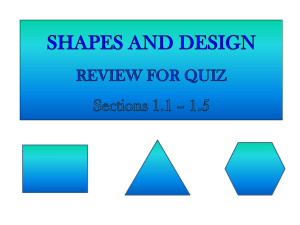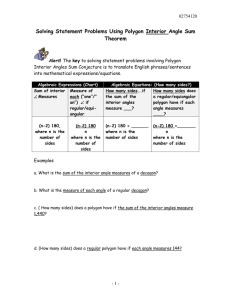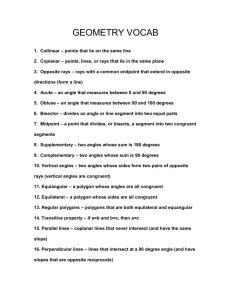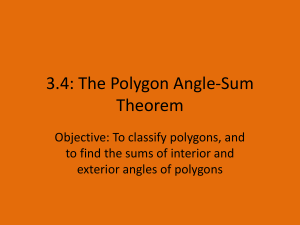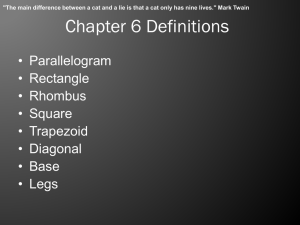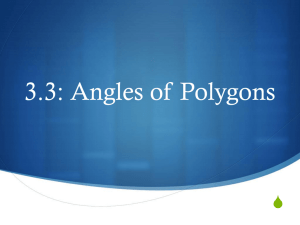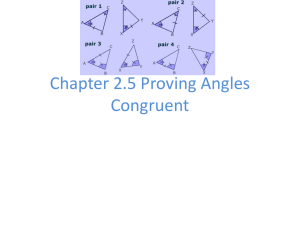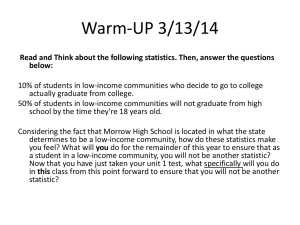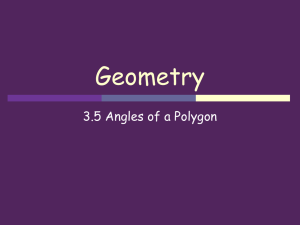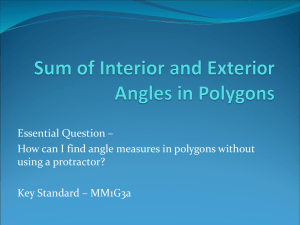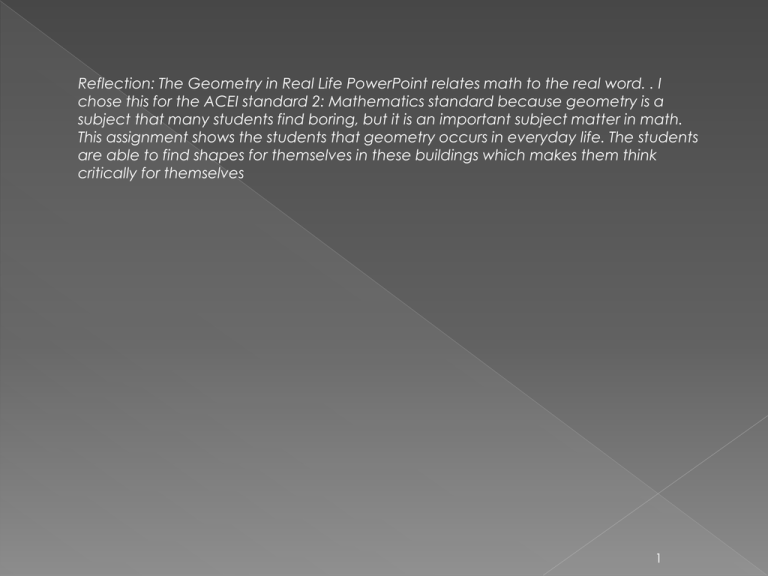
Reflection: The Geometry in Real Life PowerPoint relates math to the real word. . I
chose this for the ACEI standard 2: Mathematics standard because geometry is a
subject that many students find boring, but it is an important subject matter in math.
This assignment shows the students that geometry occurs in everyday life. The students
are able to find shapes for themselves in these buildings which makes them think
critically for themselves
1
By: Morgan Chylinski
2
Acute angles
Right angles
Obtuse angles
Congruent angles
Complementary angles
Parallel lines
Intersecting lines (not perpendicular)
Perpendicular lines
Isosceles triangles
Obtuse triangle
Parallelograms
Rectangles
Squares
Trapezoids
Polygons with more than 4 sides (pentagons, hexagons, etc.)
A symmetric polygon
A non-symmetric polygon
A concave polygon
A polygon composed by two or more smaller polygons
Mirror image/reflection (“’this’ figure can be reflected onto ‘that’ figure)
3
An Acute Angle is an angle smaller than 90 degrees.
4
5
A Right Angle is an angle that is 90
degrees.
6
7
An Obtuse Angle is an angle that is more than 90 degrees.
8
9
Congruent Angles are angles two angles that have the same
angle measurements in degrees.
10
11
Complementary Angles are two angles that add up to equal
90 degrees.
12
.
13
Parallel Lines are lines are always the same distance apart and will
never meet.
14
15
Intersecting Lines are lines that have one and only one point in
16
common.
17
Perpendicular Lines are two lines that meet at a 90 degree angle.
18
19
An Isosceles triangle is a triangle with two congruent sides.
20
21
An Obtuse Triangle has one angle that is more than 90 degrees.
22
23
A Parallelogram is a quadrilateral with both pairs of opposite sides parallel and
equal in length.
24
25
A Trapezoid is a quadrilateral which has one pair of parallel sides.
26
27
A square has four equal sides and all the eternal angles equal 90
28
degrees.
29
A Rectangle is a four sided polygon that all eternal angles are 90
30
degrees.
31
A Nonagon is a polygon with 9 sides.
32
33
A Heptagon is a 7 sided polygon with all eternal angles equaling 900
34
degrees.
35
A Symmetrical Polygon is a polygon that can be dissected into two
congruent parts that every point on one side of the bisection line will
have a reflective point on the other side of the bisection line.
36
37
A non-symmetrical polygon is a polygon that can not be dissected
into two congruent parts.
38
39
A Concave Polygon has at least one angle that measures more than 180
degrees.
40
41
This is a polygon that is made up of two smaller polygons.
42
43
44
45
3.G.1 Define and use correct terminology
when referring to shapes
4.G.1 Identify and name polygons,
recognizing that their names are related to
the number of sides and angles
4.G.7 Draw and identify intersecting,
perpendicular, and parallel lines
4.G.8 Classify angles as acute, obtuse, right,
and straight
5.G.6 Classify triangles by properties of their
angles and sides
46
Geometric objects are hidden in houses
and buildings. The world is filled with
these shapes and you can find them
everywhere you look.
Now see how many geometric objects are
in our classroom…
47
George Cathcart, Y. P. (2006). Learning
Mathematics in Elementary and Middle Schools.
New Jersey: Pearson Prentice Hall.
Page, J. (2007). Retrieved October 23, 2008, from
Math Open Reference:
http://www.mathopenref.com/common/indexpag
e.html
Steve Conrad, D. F. (2006, August). Polygons.
Retrieved October 23, 2008, from Math League:
http://www.mathopenref.com/pentagon.html
48

